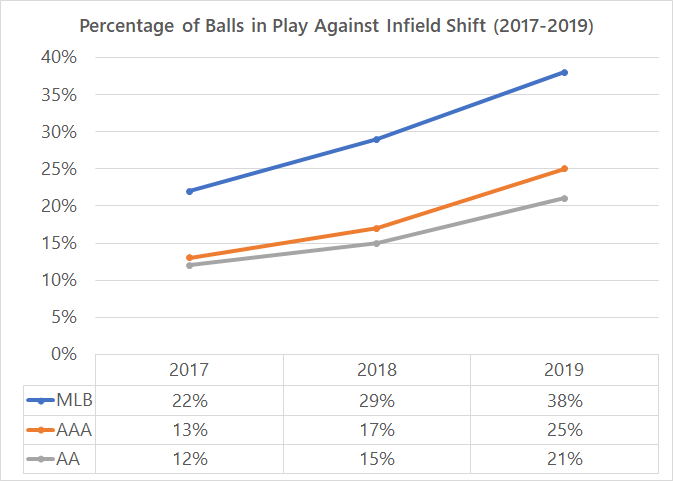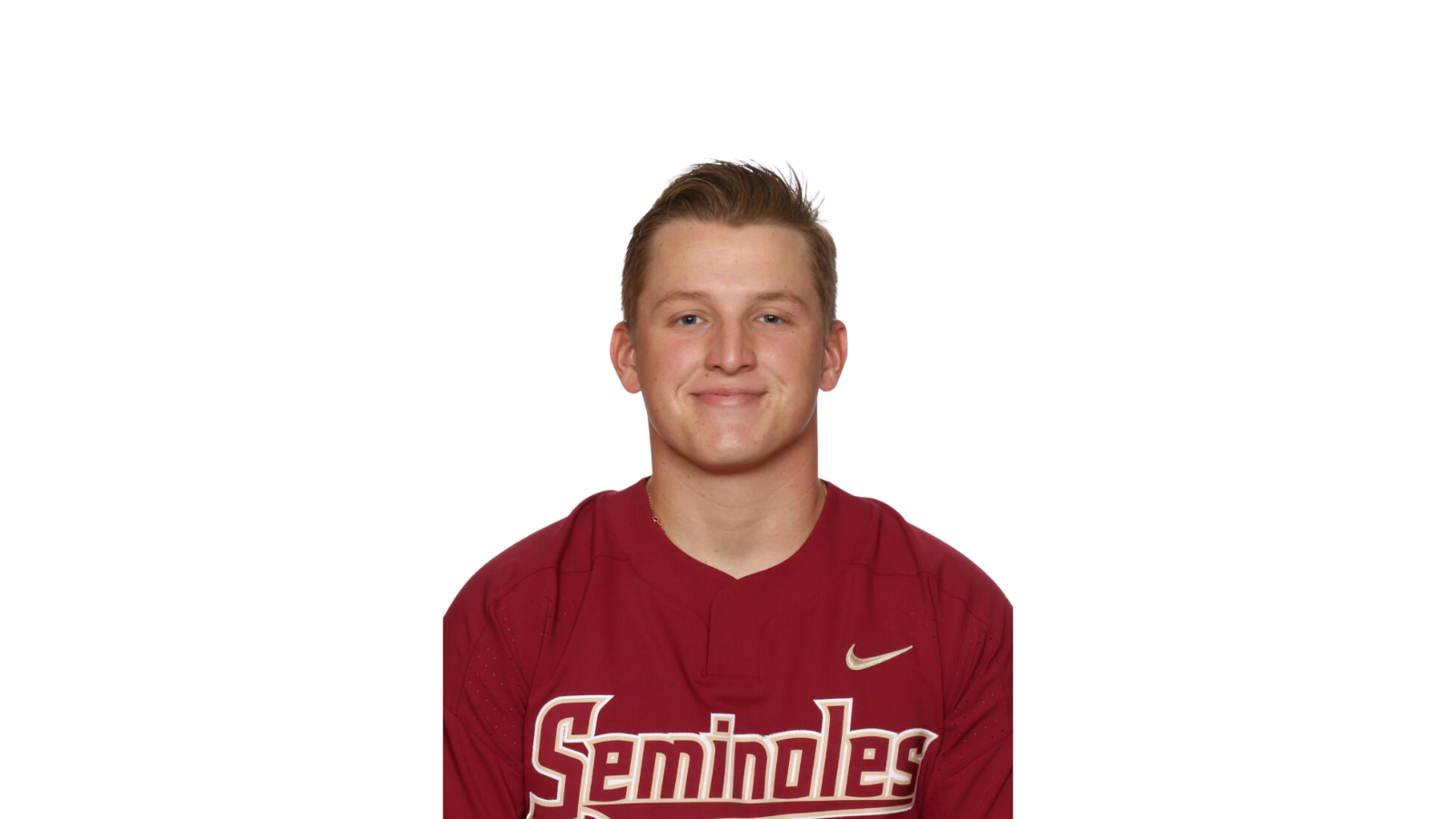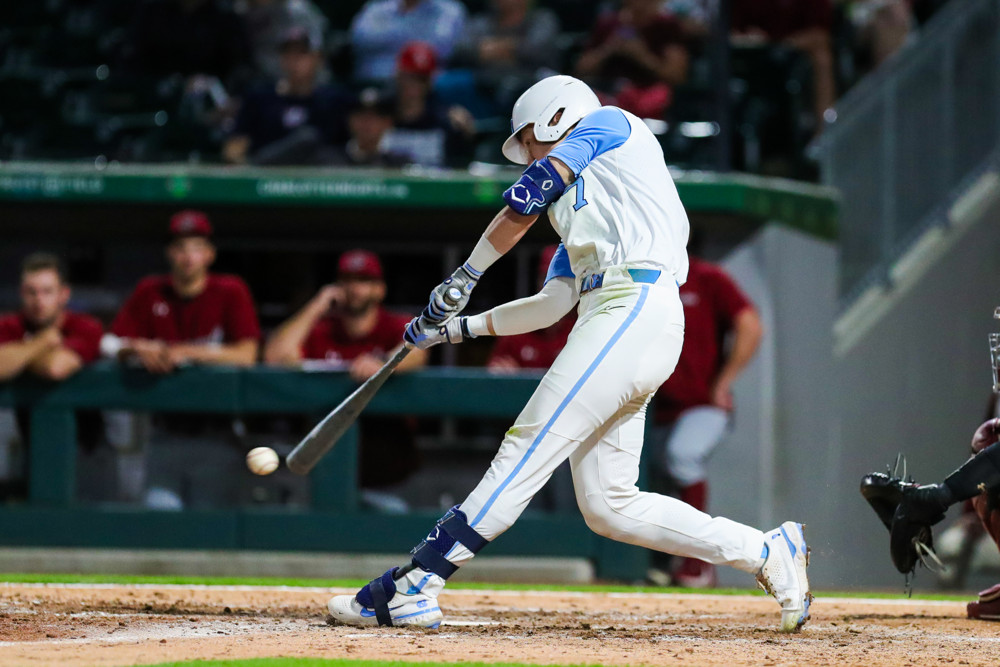Over the next month leading up to the 2019 MLB Amateur Draft, Baseball Info Solutions will be publishing a series of position-by-position scouting reports from our Video Scouts for the top-50 collegiate draft prospects. Each player is graded by the 20-80 scouting scale, given a comprehensive evaluation, and assigned a floor and a ceiling comparison, which indicate–if a player makes the Major Leagues–the range of the type of player into which he can develop.
Full coverage:
Catchers
Corner Infield (Part 1)
Corner Infield (Part 2)
Middle Infield (Part 1)
Middle Infield (Part 2)
Outfield (Part 1)
Outfield (Part 2)
Left-Handed Pitching (Part 1)
Left-Handed Pitching (Part 2)
Right-Handed Pitching (Part 1)
Right-Handed Pitching (Part 2)
This next piece covers the remaining corner infielders. There are 10 total first and third basemen in our top 50, all of whom are likely to come off the board in the first four or five rounds of the draft.
As with the first group of corner infielders, these players all possess a robust offensive profile, albeit with less upside. However, as a whole, these five players exhibit stronger defensive skills and more versatility. Kody Hoese and Nick Quintana can play all over the infield; Michael Toglia projects as an above-average defender at first base or in left field; and Aaron Schunk’s plus arm is valuable no matter where he plays. Spencer Brickhouse is the lone exception here, but even he could be a passable defender at first.
Kody Hoese, 3B
Tulane University (JR, 2019)
R/R 6-04, 200 lbs.
Date of Birth: 07/13/1997
Hit- 40 (55) Power- 55 (65) Run- 45 (50) Arm- 50 (55) Field- 50 (60)
Written by Quinn Ireland
Analysis
Kody Hoese is perhaps the highest and quickest riser in the college ranks this year. His main appeal comes from his ability to hit the ball all over the field while having a great feel for the strike zone. He has shown steady improvement each year at Tulane, and currently boasts an impressive .415/.500/.872 slash line. While those numbers won’t be realized at the next level, he should continue to hit for average and power as he moves up the ranks.
Hoese is a strong-bodied guy with a hit tool that could push him into the late first round. More likely to be a compensation round pick, he does most of his damage with extra-base hits all around the park. Not a pull-dominant player, he has shown gap-to-gap power as well as over-the-fence ability — he has 20 homers already this year, and 52 percent of his hits have gone for extra bases. Hoese is never going to be a burner on the base paths, but has shown an ability to swipe bases (four steals in four attempts this year) and could potentially keep that up at the next level. His competition has not been exceptional this year in the American Athletic Conference, which does leave some question marks, but his whole body of work seems to speak for itself.
The size/power combo he is showing currently would generally push him into a corner of the infield. At third base, he looks to move well (he was a shortstop in high school) and has a decent feel for the position. His arm hasn’t impressed, but with progression, it should at least be average, and maybe even a step above. His glove is solid, and with traditional progression could turn into a plus as well. Hoese should stick at third, but be could probably slide over to the keystone and be above-average.
Outlook
A team that is looking for an impact bat at a corner infield spot is going to have to take a long, hard look at Hoese. Should the recent power surge turn out to be more than a one-year wonder, he could turn into a top-flight offensive third baseman. Even if the power production is unsustainable, Hoese walks more than he strikes out and should get on base at a high rate, making him a valuable player at either second or third base.
Projection: Offensive-minded third baseman with on-base skills and decent power.
Ceiling: Mike Lowell
Floor: Hunter Dozier
Draft Expectation: Rounds 1-2
Nick Quintana, 3B
University of Arizona (JR, 2019)
R/R 5-10, 190 lbs.
Date of Birth: 10/13/1997
Hit- 40 (50) Power- 50 (60) Run- 50 (50) Field- 60 (65) Arm- 60 (60)
Written by Dominic Asta
Analysis
Nick Quintana has been on the radar of scouts for a long time. He was drafted in the 11th round by the Red Sox in the 2016 MLB Draft. He has been a regular in the Wildcats lineup for three years and has been a force with the bat his last two seasons. Quintana has a pretty right-handed swing that has produced great power in college. He looked good in the Cape Cod League last summer and has improved his walk percentage in his junior year. He has some swing-and-miss in his offensive game but his power combined with a good glove at third should make him very appealing on draft day.
Quintana gets the most out of his small frame at the plate. He has a big stride and leg kick as he transfers his weight forward that produces hard-hit balls and swings-and-misses. He gets up on his front foot too often and his hands do not stay back, which makes him off balance in his swing. He will make the pitcher work and get himself into deep counts that will lead to some of his strikeouts. Quintana has great bat speed. Quintana could benefit from quieting his approach and focusing more on contact than power. A jump in his BB% has been very encouraging even though he is still striking out at a 23 percent clip. His pitch recognition needs work and his struggles with breaking pitches needs improvement.
Quintana has played third base while in college but has the athleticism and glove to play at second base and shortstop. He will most likely be a third baseman at the next level, but could fill in at second or shortstop if need be. He has fluid actions at third and arm strength to make throws on the run and deep in the hole. He will make Web Gem-like plays and looks very comfortable at the hot corner, but will need to improve his lateral range and consistency if he wants to be a plus-plus defender.
Outlook
Nick Quintana has an exciting package of tools and is a player that makes it look easy at times. He is also a player that has some concerning question marks. His strikeout numbers and lack of contact are concerns that he has not addressed in Cape Cod or in his junior year. He should be a plus defender with good athleticism and above average power at the next level.
Projection: Versatile infielder with good power and potential Gold Glove defense.
Ceiling: Brandon Inge
Floor: Brett Lawrie
Draft Expectation: Rounds 2-3
Michael Toglia, 1B/OF
UCLA (JR, 2019)
S/L 6-05, 226 lbs.
Date of Birth: 08/16/1998
Hit- 45 (55) Power- 55 (65) Run- 50 (45) Arm- 50 (50) Field- 55 (60)
Written by Harris Yudin
Analysis
Following an ice-cold start to the 2019 season, Michael Toglia began Pac-12 play on a torrid pace. As of April 29, the 20-year-old switch hitter owns a 1.112 OPS with eight home runs and 31 RBI across his last 133 plate appearances. He has a history of slow starts and streaky play — slashed just .209/.307/.388 in 36 games in the Cape Cod League in 2018 — but the upside is enormous.
Toglia flaunts a big, projectable frame with huge power upside from both sides of the plate. He has filled out a bit in his junior, but there should be even more to come in terms of physical development. He utilizes an open stance from both sides, striding towards the plate and getting his foot down before the pitch arrives. He generates good bat speed and turns on the ball well by shifting his weight, making consistent hard contact to all fields and finishing with good extension. His stroke is a bit smoother from left side — there’s a habit of occasionally dropping his hands from the right side, leading to a less direct path to the ball — but there are no concerns about his being a switch hitter at the next level.
A patient hitter, Toglia prefers to attack high pitches, and is much more selective on lower pitches, which helps him draw walks but also leads to too many strikeouts looking. While he is adept at driving fastballs up, he can sometimes pull his body out, lose his balance and not stay in on the ball, causing him to whiff or foul off pitches he’d normally crush. Additionally, he has a tendency to get out ahead of breaking balls.
Toglia doesn’t possess much speed, but he can move on basepaths due to his long strides and athleticism. That athleticism helps him play an above-average first base, where he has good footwork around the bag and uses his length to stretch for throws from infielders. Despite his size, he can get low to field grounders and snag throws in the dirt. A move to a corner outfield spot could be an option — his average arm would play better in left — but UCLA’s first baseman should be able to stick at his natural position in pro ball.
Outlook
Toglia is a streaky hitter and, overall, still a bit raw, but the combination of athleticism, patience and power points to a future of high offensive production. He will likely fall outside the first round on draft day, but has the upside to provide a ton of value in the second or third round.
Projection: Athletic, switch-hitting first baseman with plus power and defense.
Ceiling: Brandon Belt
Floor: Ike Davis
Draft Expectation: Rounds 2-3
Spencer Brickhouse, 1B/DH
East Carolina University (JR, 2019)
L/R 6-04, 235 lbs.
Date of Birth: 04/10/1998
Hit- 45 (55) Power- 50 (60) Run- 40 (30) Field- 40 (50) Arm- 50 (50)
Written by Dominic Asta
Analysis
Spencer Brickhouse has displayed some of the most consistent power out of any hitter in the 2019 draft class. Based on his power numbers and his strong 6-foot-4, 235-lb. frame, he can be described as a slugger. He has launched double-digit home runs in each of his three years as a starter. He is not only a power hitter, though — he also has a patient offensive approach and an ability to make contact. Brickhouse has been a first baseman, left fielder and designated hitter at East Carolina, and has shown a solid arm and soft hands at first. The 2018 Cape Cod All-Star Game MVP has continued his climb up draft boards with a very impressive junior campaign. He has improved each year at ECU, and should be one of the first college first basemen taken in the draft.
Brickhouse has a unique swing that has no stride and very little lower body movement. He has a stiff upper body with his hands at his head and a wide, crouched stance. He lifts his front heel and sets it back down as he loads his hands forward. He uses his upper body strength to drive the ball to all fields and good bat speed to make consistent hard contact. His pull-side power is plus, and most of his home runs this season have been to right field. His power numbers have increased in his junior year, with 12 home runs and a .348 isolated power. Brickhouse is short to the ball with an uppercut swing path. He doesn’t utilize his lower body in swing and struggles with plate coverage because of his stiff upper half. As a result, he may be exposed at the next level with velocity up in the zone. His swing does allow him to recognize pitches and keep his head on the ball, however, and he has improved his plate discipline each year at East Carolina– he is currently sporting an impressive 19 percent walk rate.
Brickhouse will need to maintain his weight and body if he intends to stick at first base and not be relegated to designated hitter. He is a good enough athlete currently to stick at first, but doesn’t have the range or lateral movement to be a plus defender. A move to left field would be an aggressive position switch. He has only played left field a couple of times his junior season. His below-average speed and agility would make him a below-average defender in left. Although he derives most of his value from his bat, a move to DH would place even more pressure on his offensive game.
Outlook
Brickhouse has shown the ability to be a high on-base, slugging first baseman this year at ECU. His upper body strength has allowed him to be a great power hitter at the college level, but he could struggle at the next level when he faces stiffer competition and higher velocity. His swing may be modified after he gets drafted to help incorporate his lower body more. He will most likely be limited to first base unless a team wants to be aggressive and put him in left field, where his below-average speed would be tested. His advanced bat should help him rise through the minors fairly quickly and provide a team with a powerful lefty bat.
Projection: Patient slugger with potential for 20-plus homers per year.
Ceiling: Ryan Klesko
Floor: Justin Bour
Draft Expectation: Rounds 3-4
Aaron Schunk, 3B
University of Georgia (JR, 2019)
R/R 6-02, 205 lbs.
Date of Birth: 7/24/1997
Hit- 45 (50) Power- 55 (55) Run- 50 (45) Arm- 60 (60) Field- 45 (45)
Written by Will Hoefer
Analysis
Aaron Schunk has had a breakout year at the hot corner in his junior season at Georgia. He currently owns a .908 OPS with seven home runs on the season. He has also been a very reliable closer for the Bulldogs, posting a 2.14 ERA with 11 saves. His future will be as a hitter regardless of what position he ends up playing. Schunk has greatly improved his draft stock this year and should hear his name called in the first five rounds.
Schunk is a large-framed, thick third baseman who has finally tapped into his raw power during his junior year at Georgia. A fairly aggressive contact hitter at the plate (only 16 percent of his plate appearances end in a walk or a strikeout), he demonstrates decent hand speed and a bit of length in his swing, but controls the bat well. He generates above-average bat speed and should continue to generate above-average power at the professional level.
Unsurprising for a relief pitcher, Schunk has a plus arm but slightly below-average range at third base. With good positioning he could stick at the hot corner, and that’s starting to become less of a specific fit as organizations learn how to use defensive data to place their infielders. His skillset in the field, despite strong instincts at third, projects better in right field where his plus arm plays very well amidst a decline in foot speed.
Outlook
Schunk has solid tools across the board, with intriguing raw power and a plus arm that buoys some of his limitations in the field. He’s a tweener in about every sense of the word; if he can get some more power out of his aggressive approach as a pro then there’s a strong chance he sticks as a starter in either RF or 3B. Even if he doesn’t, there’s a solid floor here as a right-handed platoon bat who isn’t a liability on defense.
Projection: Power bat and power arm profiles best at third or right field.
Ceiling: Chase Headley
Floor: Brandon Guyer
Draft Expectation: Rounds 3-4
Other corner infielders to keep an eye on:
Tristin English, Georgia Tech
Brandon Lewis, UC Irvine
Edouard Julien, Auburn
Evan Edwards, North Carolina State



